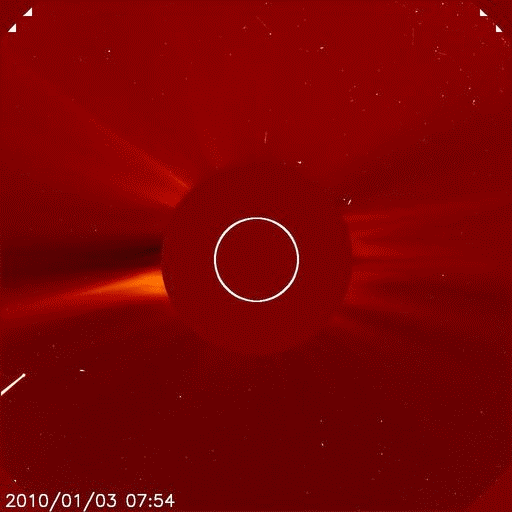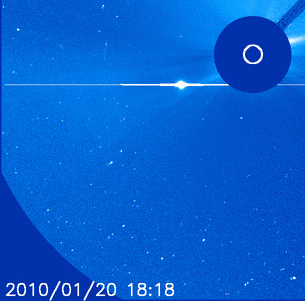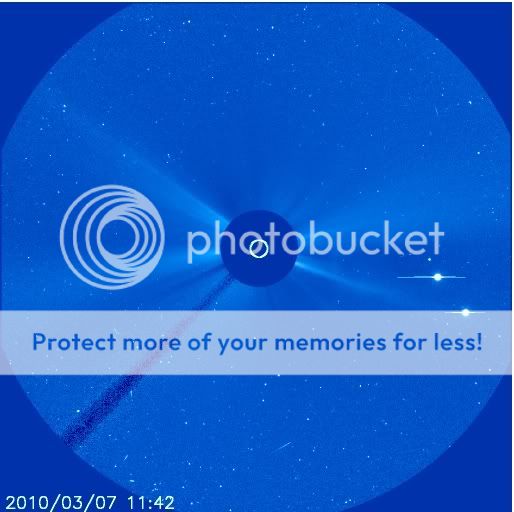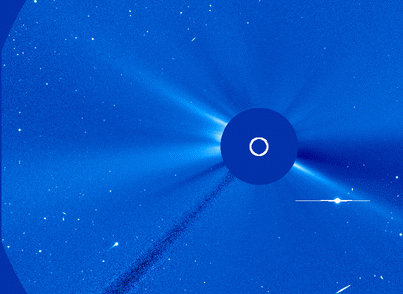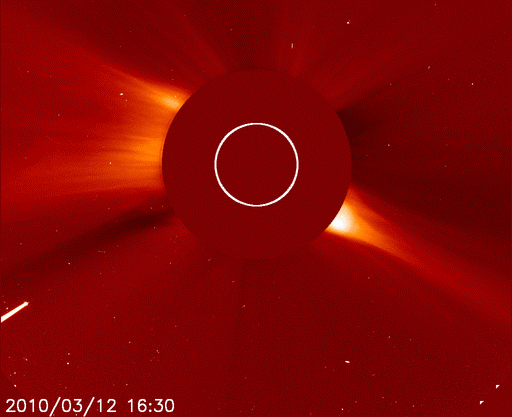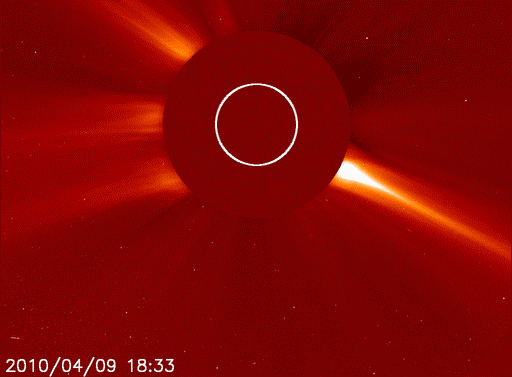I posted this a long time ago, thought it was worth dredging up again...
The Kreutz group of sun-grazing comets have been seen for more than a millenia. The original object was disrupted thousands of years ago. Since the perihelion is so close to the sun (between 0.05 and 0.095 AU) the remaining pieces have repeatedly fallen apart leaving 500 or more tiny remnants in a highly inclined orbit that almost touches the sun. They don't approach the earth, so are not a threat to us, and the sun doesn't really care, since it vaporizes all but the very largest before they complete their perihelion pass, like these 3. Some have included the Great September Comet of 1882, Ikeya-Seki in 1965, and The Great March Comet of 1843. About 80% of SOHO comets are derived from this one massive comet of the distant past, that was likely at leat 120 km in diameter, larger than any other comet I know of.
Sungrazing Comets 101
There are two basic classes, Sungrazing comets, and Sunskirting comets, difference in perihelion defining them
Sungrazing Comets
About 90% belong to the Kreutz sungrazing group
These have 600-1100 year orbits with q (perihelion)= 0.0047-0.0095 AU
(703,000-1.4 million km, 437,000-883,000 miles). The inclination is 144.0 degrees (retrograde).
Most are small, about 16-130 meters (50-425 feet) in diameter, and only the largest,
with q /> .005 AU survive the trip.
(notice the larger one visible in the recent images did not make it, and the much smaller one a few hours earlier, didn't even make it to perihelion, evaporating on the way in.)
They are thought to have originated from one large (D=~120km) comet with a period of ~1000 years.
Between 10 and 20,000 years ago, this comet was disrupted by violent outgassing and/or tidal disruption.
The largest piece lasted until about 371 BC, when it split into 3.
The largest remaining fragment, with a period of ~350 years survived intact and was observed during returns in the 1st, 4th, 8th, and 11th centuries, and the remains may have been the Comet of 1847.
This fragment was disrupted (by the same mechanisms again) during the 11th century appearence, and gave rise to Kreutz Subgroup I
Well known comets derived from this are:
C/1443 D1 (The Great March Comet)
C/1963 R1 (Peroyra)
It also includes all the comets discovered by the SMM (10) and SOLWIND (6) satellites, and about 67% of those discovered by SOHO.
The next largest fragment from the 11th century breakup, with a period of ~700 years gave rise to Kreutz Subgroup II
